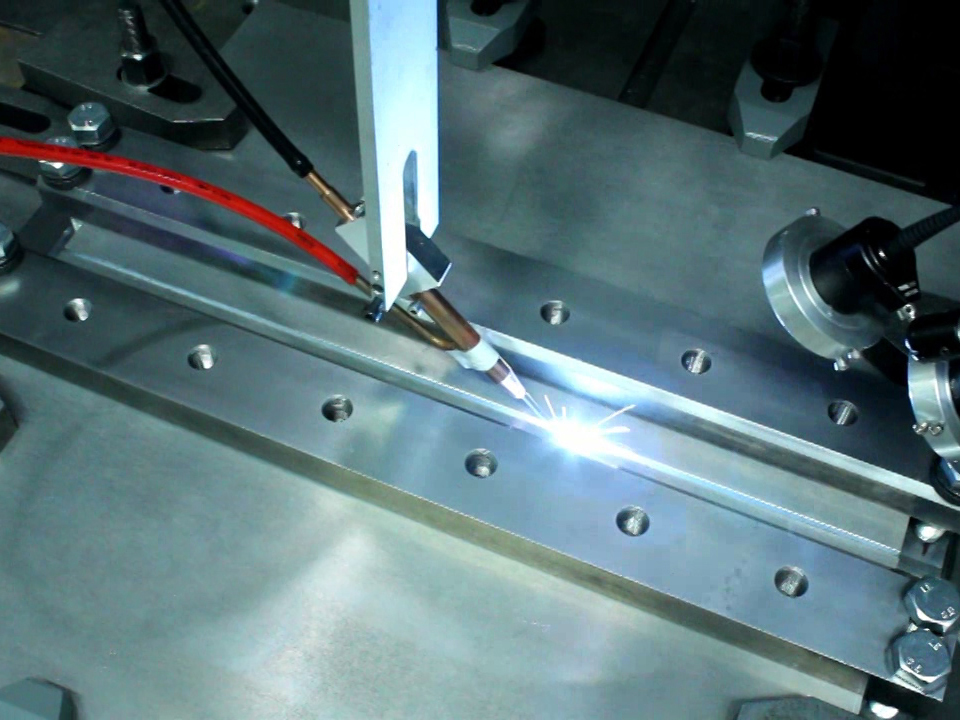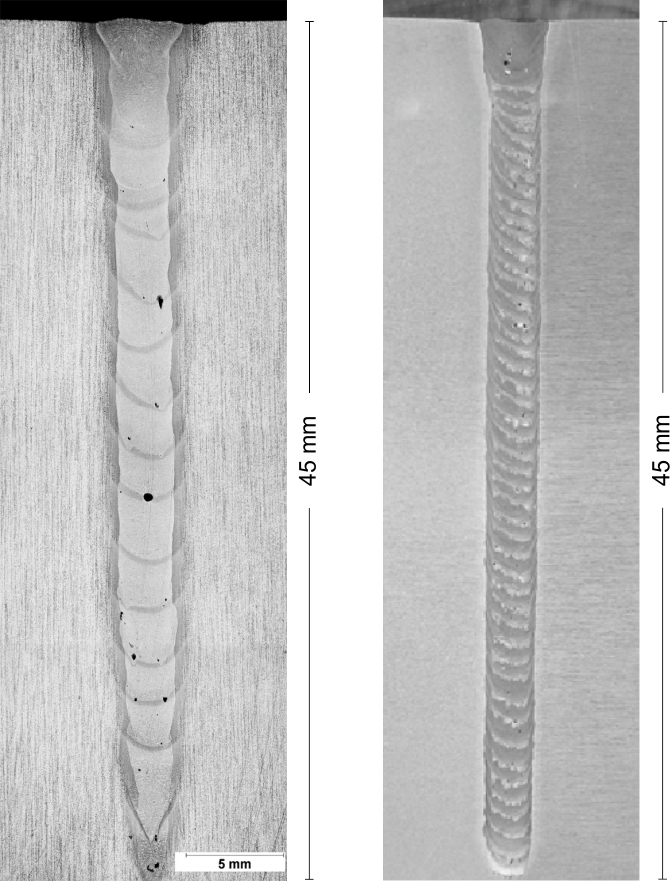Welding 50 mm thick metal sheets with only 5 kW laser power – how does it work?
Components with thick metal plates are applied in various high tech applications. The joining of these components is an essential cost factor and thus an extraordinary scientific challenge. The Fraunhofer-Institut für Werkstoff- und Strahltechnik IWS Dresden has taken up this challenge and is developing a novel cost-saving technology to weld 50 mm thick metal plates. This new procedure was demonstrated, as well as further technologies, at our Open House invitation on February 26, 2014. Additionally our engineers presented their research results at the International Laser and Joining Symposium, which was held at the International Congress Center Dresden, February 27 - 28, 2014.


Wind power stations, turbines and their housings as well as chemical apparatus can only efficiently operate when mechanical and thermal loads are most effectively utilized. A particular welding challenge is to minimize the thermal damage of the material joint structure in order to continually guarantee the technological material properties.
The laser-based multi-pass-narrow-gap-welding (MPNG) process, developed at the Fraunhofer IWS offers a technology with which metal sheets of up to 50 mm thickness can be joined at a laser power of less than 5 kW. Solid state lasers, with excellent beam quality, enable the developed welding process. The caustics of these laser sources is so extremely narrow that it can reach narrow and deep gaps without melting the adjacent fusion face. The laser beam can thus be very well focused, and it can accurately reach the bottom of the narrow gap joint and fill it layer by layer. Recent IWS’s research has focused on this novel approach for laser beam technology applications.
This approach is advantageous since it helps to decisively reduce investment costs compared to welding processes with electron beams. Furthermore it is beneficial to implement further advantages such as low angular distortion, low linear energy and very little wire filler material.
If the laser-welded plates are compared to those joined in a conventional SAW procedure, the very narrow, nearly flank-parallel weld seam comes to the fore. SAW-joined components have to be extensively refined due to distortion; however, our novel procedure benefits from a decreasing distortion at increasing sheet thicknesses. Shrinkage stresses across the weld seam, which were hitherto difficult to handle, can now, for the very first time, be managed.
The advanced MPNG welding technology now enables the application of material, hitherto improper for thick plate welding processes, such as crack sensitive alloys. Furthermore this technology is also very promising for hot crack sensitive aluminum alloys, since the necessary filler material can be directly applied into the weld root.
A further new, and most favorable, possibility is the application of thick plate welding technology in-situ, e.g., in ship building and plant engineering applications. Mobile applications, e.g., repair works in power plants, thus become possible due to the low laser power and the high energy efficiency of the applied energy sources.
 Fraunhofer Institute for Material and Beam Technology IWS
Fraunhofer Institute for Material and Beam Technology IWS